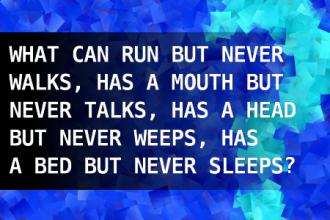
The football coach walked into...
The football coach walked into the locker room before a game, looked over to his star player and said, "I'm not supposed to let you play since you failed math, but we need you in there. So, what I have to do is ask you a math question, and if you get it right, you can play."
The player agreed, and the coach looked into his eyes intently and asks, "Okay, now concentrate hard and tell me the answer to this. What is two plus two?"
The player thought for a moment and then he answered, "4?"
"Did you say 4?" the coach exclaimed, excited that he got it right.
At that, all the other players on the team began screaming, "Come on coach, give him another chance!"
The player agreed, and the coach looked into his eyes intently and asks, "Okay, now concentrate hard and tell me the answer to this. What is two plus two?"
The player thought for a moment and then he answered, "4?"
"Did you say 4?" the coach exclaimed, excited that he got it right.
At that, all the other players on the team began screaming, "Come on coach, give him another chance!"

